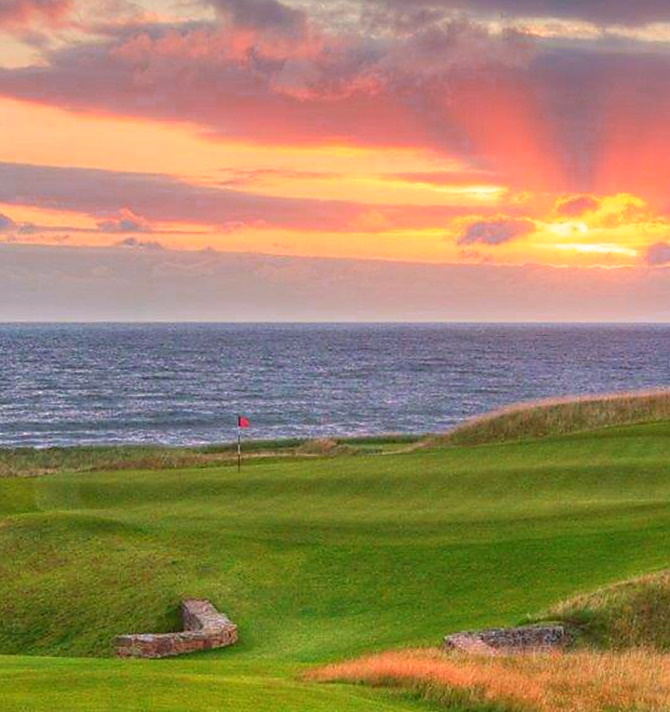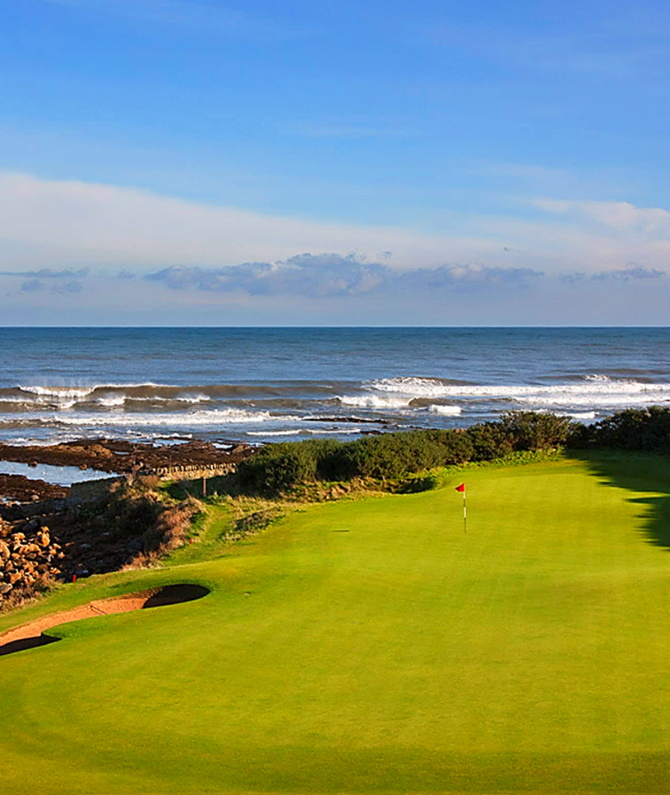
Purpose building a ‘links’ course out of arable land within a few miles of St Andrews was considered a risky business, and there was no small amount of anxiety and even scepticism as this project launched. They needn’t have worried. The result was outstanding and Kingsbarns quickly earned a world-top-50 ranking. Played on three tiers along a raised storm beach, the design seeks to make maximum use of extended views of the ocean with the savage North sea in view at nearly every hole
On opening, it was the twelfth and fifteenth that the media latched onto but it was the fourth and fifth that caught Tom Doak’s eye when he referenced them in his appraisal “as piece of construction work, Kingsbarns is one of the best projects I’ve ever seen. I wouldn’t have believed it, if I hadn’t seen it for myself”. It’s often said the course feels older than it is, the fifth really captures that as it effortlessly fuses into the landscape as if it always were
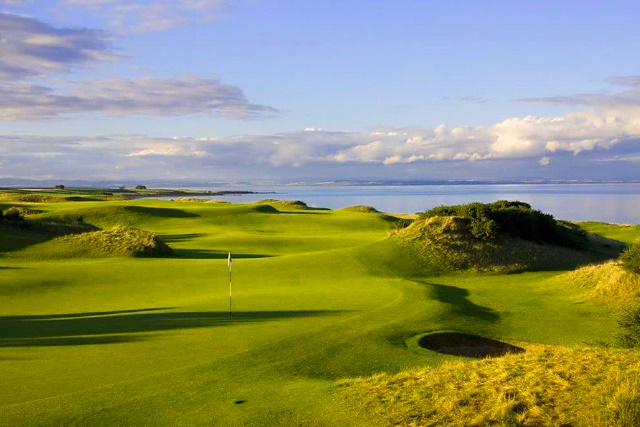
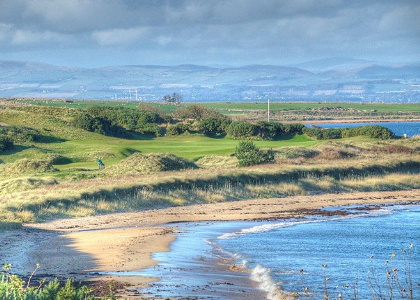
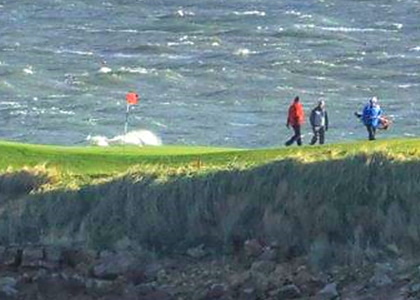
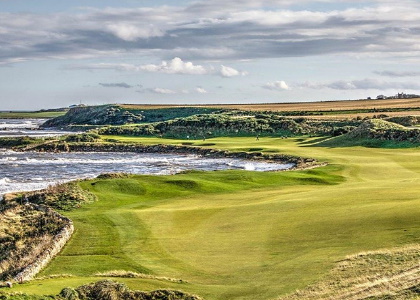

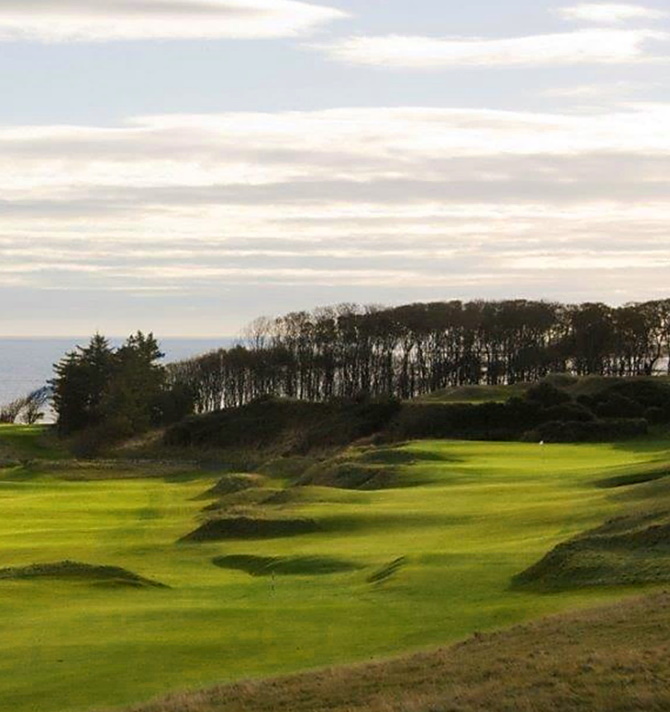
The seventh is a strong par 4 that typically plays into the the wind along the middle tier. Not without good reason is it ranked number 1 on the course by stroke-index as nothing seems to be working in the golfers favour. Aim up the right side and the slope will bring the ball back into the centre of a narrowing fairway that tightens up in the landing area and has a severe run off to the left. Falling off the fairway to the left is going to leave you chasing from now on to the cup.
The approach requires a decent contact too and an extra club is a smart idea since the hole plays uphill to the green and you must carry the last fairway bunker. Shots landing short of the green will kick to the left leaving a difficult chip to save the score
On opening it was the par 5, twelfth that the media latched onto and it still tends to be the regulation nomination in these composite best 18 fantasy courses that people like to design. It’s a magnificent hole playing along an arching shoreline that bends its way around to a green that is perched on a nub of land jutting out into the sea. It plays long and this is probably its primary defence. The beauty is in the aesthetics and the dramatic walk
Favour the right hand side off the tee and allow the slope to feed the ball back into the centre. Lay up shots should finish on the last fairway bunker on the right to open up this 65 yard long green, beware of the pot bunker back right.
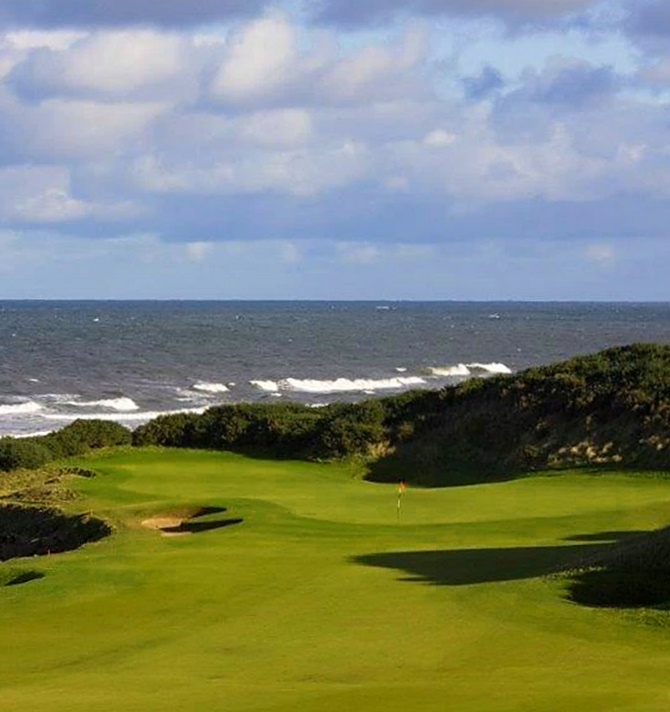
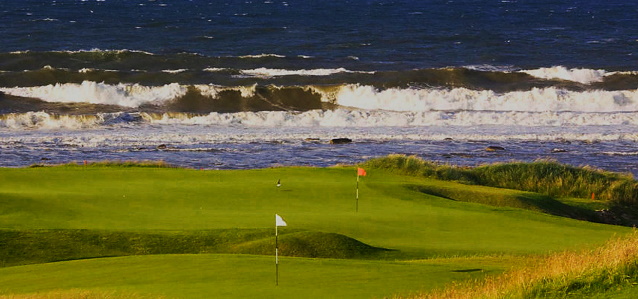
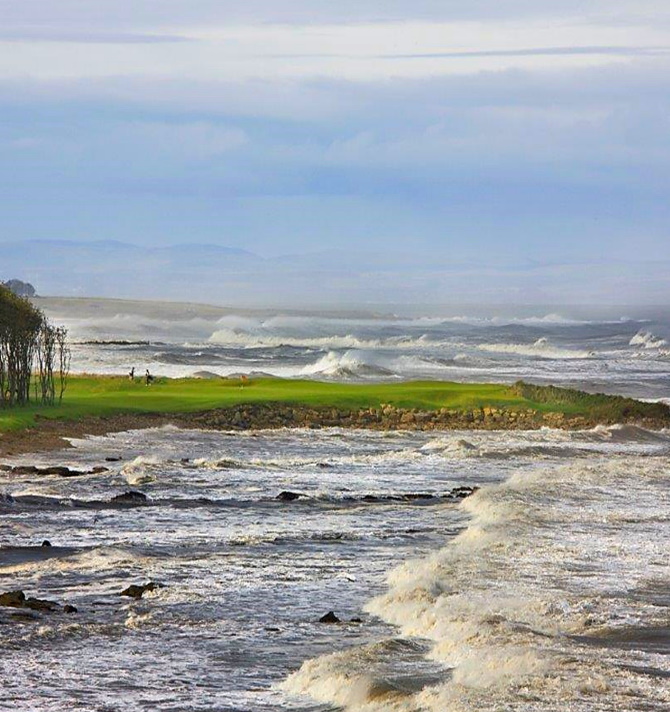
The fifteenth has increasingly begun to vie with the twelfth for the accolade of signature hole. It’s a visually intimidating par 3 that plays to a green located on a rocky outcrop that projects into the waves. There is a line to the left for those who don’t fancy running up an expensive sequence of lost balls to the waves. On some people’s fantasy composite course, the fifteenth has even replaced North Berwick’s iconic ‘Redan’ hole such is the reputation it’s developing
Regardless of the pin position tee shots should be aimed at the bunker back left and allow the slope to feed the ball into the centre of the green. The trees will often block out the wind from the left so take plenty of club and don’t chase the sucker pin on the right.
Sculpting a ‘links’ out of arable land was always going to be a challenge, especially for a design team committed to the philosophy of enhancing the natural. You can probably imagine their delight therefore when excavations revealed a subterranean burn running into the sea. “We’re having that” they must have thought! And so they did. The discovery was duly woven into the tapestry and guards the front entry to the 18th green, and the rear of the sixth
The approach requires a lot of nerve and consideration must be given to how far you can carry the ball through the air, if you choose to lay up pay attention to the fast running fairway which has been contoured to feed the burn.
